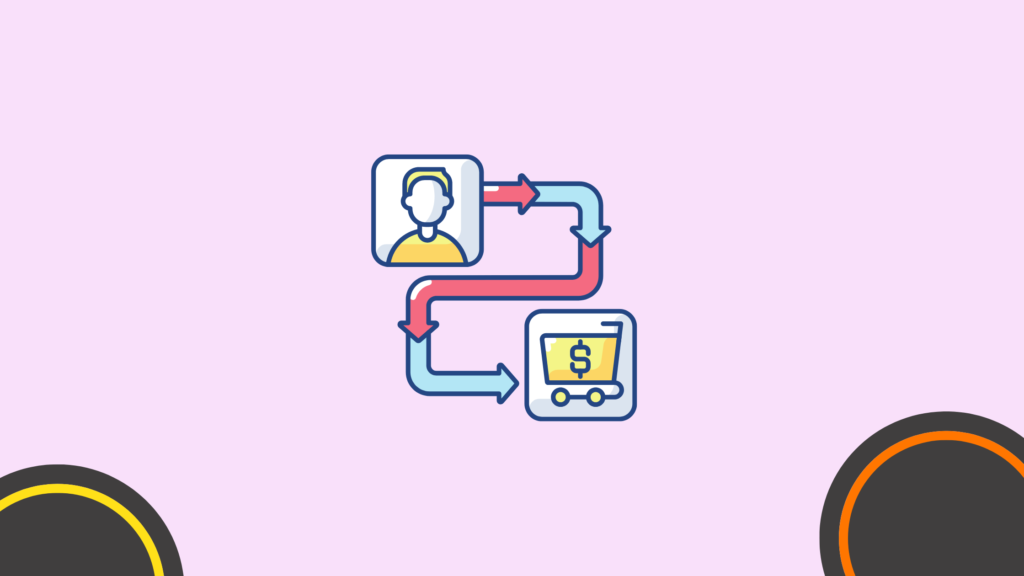Transforming Customer Journey Maps: The Muscle of Accounting Innovation in Effective Marketing
Effective marketing is crucial for the success of any business. Good marketing strategies drive customers to your business, increasing stock turnover and revenue collection. Understanding your customers’ needs leads to customer-centered services that make them feel recognized and appreciated.
As a result, they will keep returning to shop more from your business. Moreover, they will develop loyalty and attract others to your business through positive word of mouth.
However, to make this happen, it is essential to understand your customers’ needs, and pain points, and be prepared to address their problems. To accomplish this, you must develop methods to study their shopping behaviors and conduct follow-ups to gather insights about their shopping experience. Doing so will help you understand their shopping experience and the complaints they have, and thus improve your services and products.
To achieve this, you can utilize customer journey mapping.
Here is how customer journey mapping can transform an organization’s marketing.
Keep reading!
Chapters

What is Customer Journey Mapping?
Customer journey mapping is a flowchart or a diagram that shows the path customers follow to reach the company. It helps to learn and improve customers’ experience. It depicts customers’ interaction with your products/services, their pain points and needs, and how you can improve satisfaction and value.
Customer journey mapping is helpful in innovation accounting. Any new product a company launches is a new product in the market. A company must, therefore, keep track of the product’s performance in the market to discover its value and unique selling points.
As a result, a company uses customer journey mapping to collect information on customers’ behaviors toward the product. Some of the information the company collects is the number of people who bought the product and how many people may return to buy the same product. To decide on the product’s viability, the company uses accounting innovation to analyze this information.
Furthermore, the goal of any organization is to generate profit. If the company discovers that the product isn’t making enough sales, the company uses this information through customer journey mapping to improve the product.
If further improvements on the product prove ineffective, the company should consider discontinuing it. These types of decisions are influenced and are often the result of innovation accounting.
Benefits of Customer Journey Maps

The creation of customer journey maps offers several advantages. Some of the benefits include:
Customer Base Extension
Understanding customers’ experiences, pain points, and needs enables your company to enhance customer service delivery. When you understand your customers, you will have a clear picture; of who they are and what they want. As a result, you will focus on delivering to their needs.
As a result, customers will feel valued and recognized, leading them to become repeat customers. Furthermore, they will develop loyalty to your company.
Moreover, satisfied customers will spread positive feedback about your business and their customer experience, resulting in additional customers down the line.
Enabling a Positive Customer Experience
A customer journey map enables you to analyze your customers’ behaviors comprehensively. It is like a road map that shows customers’ journeys and can help predict their next steps. It helps you discover when your customers are happy and why they experience happiness. Knowing this in advance helps prepare ideal customer service and know when to apply them.
Additionally, anticipatory customer care increases the reliability of your product by your customers. For example, if you anticipate a high influx of customers during Christmas, you can proactively inform them about extended service hours.
By doing so, the customers will feel valued. In return, they will become loyal customers of your business.
High Rate of Customer Retention
By identifying your customers’ pain points and finding solutions, you significantly increase your chances of retaining them. Customers are more attracted to businesses that deliver to their needs. As a result, feeling the customers’ gaps will make them want to return for more.
Furthermore, you can address customer challenges through proactive measures before they even arise. As a result, customers will feel attracted to your services. Therefore, the customers will keep on coming back.
How to Prepare Customer Journey Maps

The following steps will guide creating a customer journey map.
Goal Setting
The initial step in creating customer journey maps is setting a clear goal. To do so, identify your customer personas. Doing so will ensure that your goals align with your customers.
Gather stakeholders within your organization familiar with your product and use them as personas.
Persona Researching
The next step is to find out information about your persona. You can do this by talking to your regular customers.
Additionally, you can collect data through:
- Interviews
- Web analytics
- Talking to customer care employees, and many more.
Gather both quantitative and qualitative information to ensure customer-centric business decisions.
Show Touchpoint of the Customers
Touchpoints are the various points of direct interaction between customers and your products. They include visiting the store, social media platforms, customer care line calls, and marketing email responses.
Current State Mapping
Map what you believe is the current state of your customer’s experience. You can use Lucidchart to organize your touchpoints and data. Additionary, ask your stakeholders to participate in creating an effective mapping.
Creating current state maps will help you identify gaps in user experiences.
Future State Mapping
By creating a current state map, you can identify gaps in customer experience and pinpoint their pain points. Using LucidChart’s layers and hotspots, create a map of the potential solution.
After doing so, give your finding to everyone in the company for them to improve in their areas. Doing so will help in speeding up the customer journey experience improvement.
Conclusion
Customer journey maps and innovation accounting can help improve marketing. Customer journey maps help companies identify gaps in user experience and address pain points. As a result, customer service will improve, attracting new customers and retaining the current ones.
To prepare customer journey maps, first set goals the map will help you achieve. Further, research your personas and then show touchpoints. Next, create a map of the current state of the customer journey and then design a map of the future state. Lastly, share your potential solutions with everyone to improve the customer journey.
FAQ
What is a customer journey map?
A customer journey map is a visual representation that outlines the various touchpoints and interactions a customer has with a brand throughout their entire journey, from initial awareness to post-purchase support.
Why are customer journey maps important for businesses?
Customer journey maps are important for businesses because they help organizations gain a deeper understanding of their customers’ experiences, identify pain points and opportunities for improvement, and optimize interactions to enhance customer satisfaction and loyalty.
What are the key components of a customer journey map?
The key components of a customer journey map typically include stages of the customer journey, such as awareness, consideration, purchase, and retention; customer touchpoints; emotions and motivations; pain points; and opportunities for engagement.
How can businesses create effective customer journey maps?
Businesses can create effective customer journey maps by conducting research to understand customer behaviors and preferences, identifying key touchpoints and interactions, visualizing the journey from the customer’s perspective, and validating the map through customer feedback and testing.
What tools can businesses use to create customer journey maps?
Businesses can use a variety of tools to create customer journey maps, including specialized software such as journey mapping platforms, graphic design tools like Adobe Illustrator or Canva, or even simple tools like whiteboards and sticky notes for brainstorming and collaboration.
How often should businesses update their customer journey maps?
Businesses should update their customer journey maps regularly to reflect changes in customer behaviors, preferences, and market trends. It’s essential to revisit and refine journey maps periodically to ensure they remain accurate and actionable.
How can businesses use customer journey maps to improve the customer experience?
Businesses can use customer journey maps to improve the customer experience by identifying pain points and friction areas, implementing targeted improvements at key touchpoints, personalizing interactions based on customer needs and preferences, and aligning internal processes and resources to better serve customers.
What role does customer feedback play in refining customer journey maps?
Customer feedback plays a crucial role in refining customer journey maps by providing insights into the actual experiences and perceptions of customers. Incorporating feedback helps businesses validate assumptions, prioritize improvement initiatives, and ensure the accuracy and relevance of journey maps.
How can businesses measure the effectiveness of their customer journey maps?
Businesses can measure the effectiveness of their customer journey maps by tracking key performance indicators (KPIs) such as customer satisfaction scores, Net Promoter Score (NPS), customer retention rates, and conversion rates at various stages of the journey.
Can customer journey maps benefit different departments within an organization?
Yes, customer journey maps can benefit different departments within an organization by providing a holistic view of the customer experience and fostering cross-functional collaboration. Marketing, sales, customer service, product development, and operations teams can all use journey maps to align their efforts and deliver a seamless experience across touchpoints.
What are the common challenges businesses face when creating customer journey maps?
Common challenges businesses face when creating customer journey maps include obtaining accurate data and insights, aligning internal stakeholders on the mapping process, identifying all relevant touchpoints, and ensuring the map remains actionable and adaptable to changing customer needs.
How can businesses use customer journey maps to identify opportunities for innovation?
Businesses can use customer journey maps to identify opportunities for innovation by pinpointing areas where customers’ needs are not adequately met or where friction exists in the experience. This insight can inspire innovative solutions and new product or service offerings that address unmet needs.
What role does empathy play in the creation of customer journey maps?
Empathy plays a crucial role in the creation of customer journey maps by helping businesses understand and empathize with customers’ emotions, pain points, and motivations at each stage of their journey. This empathy enables businesses to design experiences that resonate with customers on a deeper level.
How can businesses incorporate customer personas into their customer journey maps?
Businesses can incorporate customer personas into their customer journey maps by mapping out the unique experiences of different customer segments based on their demographics, behaviors, preferences, and goals. This approach ensures that journey maps are tailored to the specific needs of each persona.
Can customer journey maps help businesses prioritize investments in customer experience initiatives?
Yes, customer journey maps can help businesses prioritize investments in customer experience initiatives by highlighting areas of the journey that have the greatest impact on overall customer satisfaction and loyalty. This prioritization ensures that resources are allocated effectively to areas where they will yield the highest return.
How can businesses ensure that customer journey maps remain relevant over time?
Businesses can ensure that customer journey maps remain relevant over time by regularly updating them based on new data, customer feedback, and changes in the market landscape. Continuous monitoring and refinement ensure that journey maps accurately reflect the evolving needs and preferences of customers.
What are some best practices for visualizing customer journey maps?
Best practices for visualizing customer journey maps include using clear and intuitive formats such as flowcharts, timelines, or infographics, incorporating visual elements like icons and color coding to represent different touchpoints and emotions, and keeping the map concise and easy to understand.
How can businesses use customer journey maps to enhance omnichannel experiences?
Businesses can use customer journey maps to enhance omnichannel experiences by identifying opportunities to create seamless transitions between different channels and touchpoints. This ensures that customers receive consistent and cohesive experiences regardless of how they interact with the brand.
Are there any ethical considerations businesses should keep in mind when creating customer journey maps?
Yes, businesses should consider ethical considerations when creating customer journey maps, such as respecting customer privacy, obtaining consent for data collection, and ensuring transparency about how customer data is used to inform the mapping process.
How can businesses encourage cross-functional collaboration around customer journey maps?
Businesses can encourage cross-functional collaboration around customer journey maps by involving stakeholders from various departments in the mapping process, fostering open communication and sharing insights across teams, and aligning incentives and goals to prioritize the customer experience.
Author’s Bio:
Daniel Martin loves building winning content teams. Over the past few years, he has built high-performance teams that have produced engaging content millions of users enjoy. After working in the Aviation industry for ten years, today, Dani applies his international team-building experience at organiclinkbuilders.com to solving his client’s problems. Dani also enjoys photography and playing the carrom board. Find me at: linkdoctor.io
Top AI Marketing Generators
Master the Art of Video Marketing
AI-Powered Tools to Ideate, Optimize, and Amplify!
- Spark Creativity: Unleash the most effective video ideas, scripts, and engaging hooks with our AI Generators.
- Optimize Instantly: Elevate your YouTube presence by optimizing video Titles, Descriptions, and Tags in seconds.
- Amplify Your Reach: Effortlessly craft social media, email, and ad copy to maximize your video’s impact.